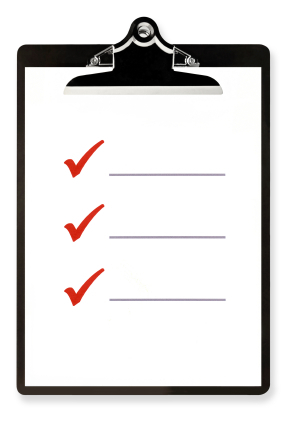Measuring Sales Force Effectiveness
 How do you measure the effectiveness of a sales force? Most companies agree that revenue and margins are key indicators of health. At the individual level we can examine gap-to-goal. But those metrics are lagging indicators. They also don’t tell us much about the quality or effectiveness of those results. How do we really know we’re getting the most out of our sales organization?
How do you measure the effectiveness of a sales force? Most companies agree that revenue and margins are key indicators of health. At the individual level we can examine gap-to-goal. But those metrics are lagging indicators. They also don’t tell us much about the quality or effectiveness of those results. How do we really know we’re getting the most out of our sales organization?
It’s a complex question, with many variables. Further, the answer will change over time and will vary from company to company. However, there are ways to compartmentalize it and break it down. Here is a short list of approaches sales organizations often take to understand sales force effectiveness:
Delivering on corporate strategy—Think about it in terms of not what Sales is doing, but what Sales is doing to meet corporate objectives. What are the things we’re doing to grow revenue and increase profitability, grow cash flow, etc? What are the key objectives that we are looking to achieve? Then, what are the processes that enable these things? How do we improve them?
Where/how sales reps spend their time—Where do reps spend their time? Are they spending it on the right activities? On the right opportunities? With the right customer stakeholders? There are a number of ways to start answering these questions.
At the highest level, think through coverage and segmentation models. Do we have time to serve all our customers equally? Do we want to serve all customers equally? One facet of this is to first assess if we’re spending the right time with the right accounts. To do that, we’ll want to think about our segmentation and coverage models. (CEB Sales members, learn how you can optimize your go-to-market strategy).
When it comes to individual sales reps and how they spend their time, companies often compare time spend to sales performance (called a time/productivity analysis; learn more here) to identify and differentiate between high value activities and low value activities. You can eliminate/offload/automate the low value activities, and redirect reps toward the high value activities.
Lastly, you can examine the deals that reps pursue and how they pursue them. This has implications on opportunity qualification, stakeholder identification, engagement strategies, and the sales process (CEB Sales members, learn more about opportunity qualification and focusing on the right customer contacts).
The quality/effectiveness of sales rep efforts—How do we not only measure how reps spend their time, but also measure the quality of those interactions?
One way is through metrics selection and the identification of leading indicators. Do we know what activities have the biggest correlation with customer outcomes, and are we measuring those?
A second way is through customer verifiers. Many sales rep activity metrics don’t go far enough—the fact that we met with a customer or sent a proposal tells us nothing about the quality of that meeting or their likelihood to actually buy from us. Instead of measuring our activities, we can identify customer verifiers—binary, tangible, concrete customer actions—that more accurately place customers in their buying process. By embedding customer verifiers into our pipelines, we can better track the effectiveness of our activities. (CEB Sales members, learn how you can use customer verifiers to improve forecasting accuracy).
The effectiveness of the processes we enable—While the last two items were focused on how reps invest their time, this one looks at where Sales and Sales Enablement should spend their time. While there are a number of things we can do to increase the effectiveness of the sales organization, which will have the biggest impact on the sales force? How do we know we’re performing at peak level for any given area?
CEB has compiled decades of quantitative analysis and best demonstrated practices in the world of sales and built the Anatomy of a World Class Sales Organization. The Anatomy allows your leadership team to assess performance against the definition of world-class across 24 attributes of a sales organization. The diagnostic is meant to help you prioritize and identify a short list of areas where you will have the greatest impact on the performance of sales force. You can also benchmark your organization against others who have completed the diagnostic.
It’s not just what you sell, it’s how you sell—As sales continues to grow into a more complex function, it’s not just good enough to measure gap-to-goal. There’s a right way and a wrong way to close business. You also need to understand the behaviors reps bring to the job and if they are selling the right way. We’re seeing leading edge companies give competencies far greater weight when it comes to evaluation, performance review, and advancement. Many organizations have started to work behaviors into their compensation plans. See how the best organizations are certifying rep behaviors and business outcomes in addition to gap-to-goal for sales reps and sales managers.
How we measure impact of investments—Whether you choose one or a combination of the above approaches, we’re going to have to measure the impact. There are a couple ways we’ve seen companies isolate the impact of different sales enablement efforts. The most important step is to first take an outcomes-back approach and pre-agree on metrics you’d expect to see from behavior change.
What did we miss? Are there other approaches you’ve used?
Brent Adamson's Blog
- Brent Adamson's profile
- 9 followers



